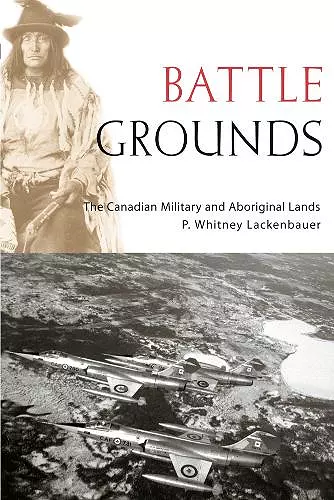Battle Grounds
The Canadian Military and Aboriginal Lands
Format:Paperback
Publisher:University of British Columbia Press
Published:1st Jul '07
Currently unavailable, and unfortunately no date known when it will be back

Base closures, use of airspace for weapons testing and low-level flying, environmental awareness, and Aboriginal land claims have focused attention in recent years on the use of Native lands for military training. But is the military's interest in Aboriginal lands new? Battle Grounds analyzes a century of government-Aboriginal interaction and negotiation to explore how the Canadian military came to use Aboriginal lands for training. It examines what the process reveals about the larger and evolving relationship between governments and Aboriginal communities and how increasing Aboriginal assertiveness and activism have affected the issue. -- Jonathan Vance, author of Building Canada: People and Projects that Shaped the Nation Whitney Lackenbauer's Battle Grounds surveys the complex world of Native-military relations in twentieth-century Canada. Skillfully parsing the diverse forces at work in this relationship, his account is an astute reinterpretation of government-Aboriginal interactions that greatly enriches scholarly writing on relations between Natives and newcomers. -- J.R. Miller, author of Lethal Legacy: Current Native Controversies in Canada
Using a case study approach, this work explores how the Canadian military came to use Aboriginal lands for training purposes, how negotiations over the use of those lands revealed the evolving relationship between Aboriginal groups and the government, and how the growth of Aboriginal assertiveness and activism has affected the land rights issue.Base closures, use of airspace for weapons testing and low-level flying, environmental awareness, and Aboriginal land claims have focused attention in recent years on the use of Native lands for military training. But is the military’s interest in Aboriginal lands new? Battle Grounds analyzes a century of government–Aboriginal interaction and negotiation to explore how the Canadian military came to use Aboriginal lands for training. It examines what the process reveals about the larger and evolving relationship between governments and Native communities, and how increasing Aboriginal assertiveness and activism have affected the issue.
This timely text will be of great assistance to those assisting the First Nations in the recovery of their ancestral lands. With maps, tables and illustrations, the author takes the reader through fifty years of native land takeovers by the Canadian military. This may well be the handbook for those assisting in land recovery or lease variation. -- Ronald F. MacIsaac * Fiat Justicia *
... readers will be rewarded by a spirited and provocative introduction and conclusion and plenty of fresh research. -- Desmond Morton * University of Toronto Quarterly, Vol. 77, No. 1, Winter 2008 *
ISBN: 9780774813167
Dimensions: unknown
Weight: 540g
368 pages